The office of Tribune of the Plebs (tribunus plebis) is one of the most fascinating and revolutionary institutions of the Roman Republic. Born out of the struggle between the patricians, Rome’s early aristocratic elite, and the plebeians, the common people, the tribunate developed into one of the most unique guardianship roles in the history of politics. Though the position carried no military command and was outside the traditional cursus honorum, the tribunate offered unparalleled powers: the right to veto (intercessio), personal sacrosanctity, the ability to propose laws, and eventually, an indirect path to Rome’s highest offices.
This article explores why the tribunes were such a radical innovation in Roman politics, how they transformed the balance of power between rich and poor, and how their legacy influenced the Republic’s turbulent history. It will also examine the careers of emblematic tribunes such as the Gracchi brothers, Saturninus, and Publius Sulpicius Rufus, who embodied both the promise and peril of wielding popular power.
Origins of the Tribunate
The Struggle of the Orders
The tribunate arose from the sharp social conflicts of the early Republic, known as the Struggle of the Orders (494–287 BCE). After the overthrow of the monarchy in 509 BCE, patricians monopolized political authority by controlling the Senate and the magistracies. Plebeians, excluded from formal representation but essential as soldiers and laborers, found themselves exploited by debt, disadvantaged in law, and powerless in decision-making.
The decisive turning point came in 494 BCE with the First Secession of the Plebs. Faced with crushing debts and a lack of protection, the plebs collectively withdrew from the city, camping on the Sacred Mount (Mons Sacer) and refusing to serve in the army. The secession struck at Rome’s military backbone and forced the patricians to negotiate. The outcome was the creation of the tribunes of the plebs, magistrates elected exclusively by the plebeian assembly, whose function was to defend plebeian interests against patrician magistrates.
A Revolutionary Innovation
The creation of the tribunate was extraordinary in constitutional history. For the first time, a legally recognized magistracy was introduced outside the patrician framework, vested with its own popular legitimacy. Unlike consuls or praetors, tribunes were not chosen by patricians nor controlled by the Senate. Instead, their authority derived from their election by the Concilium Plebis, a plebeian assembly. The office introduced a radical form of counterpower into Rome, institutionalizing social conflict within law itself.
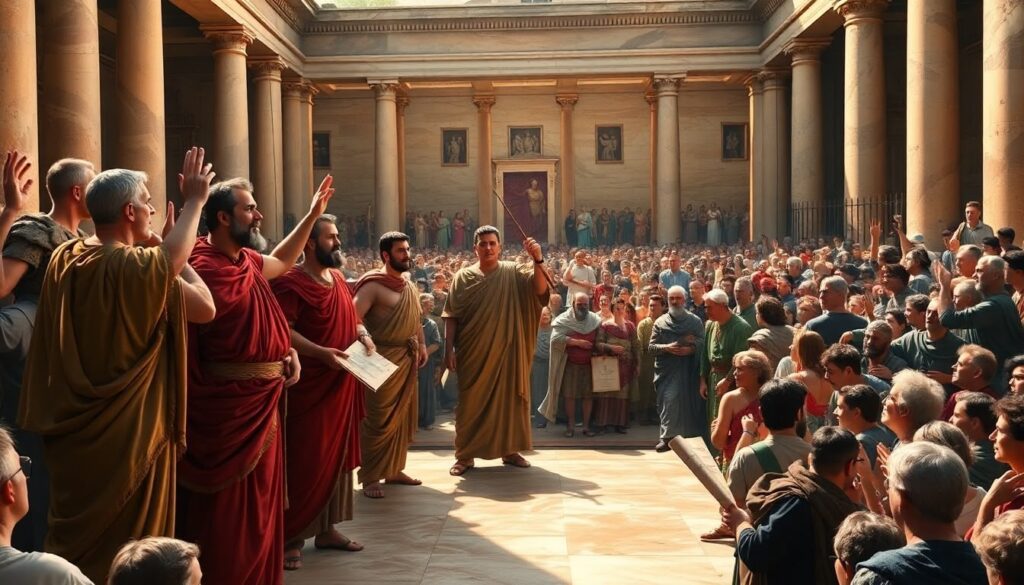
Powers of the Tribunes
The Right of Veto (Intercessio)
The most famous power of the tribunes was their intercessio—the right of veto. Any action by magistrates or the Senate could be blocked if a tribune deemed it harmful to the people. In practice, a single tribune could halt legislation, suspend decrees, and even intervene in judicial processes. This made the tribunate a check on the patrician magistracies and Senate, ensuring plebeian voices could not be completely ignored.
Tribunes employed their veto not only defensively but also strategically, pressuring the Senate to compromise or forcing policy shifts. While critics complained that vetoes could paralyze governance, they served as a powerful leverage mechanism for the plebeians, preventing unilateral decisions by Rome’s elite.
Sacrosanct Inviolability
Even more revolutionary was the sacro-saint inviolability (sacrosanctitas) granted to tribunes. By a sacred oath, the plebeians swore that anyone who harmed a tribune could be killed without legal repercussions. This transformed the tribune into a living sanctified figure, whose person was immune to insult, assault, or coercion.
Sacrosanctity empowered the tribunes to act boldly: they could place themselves physically between plebeians and magistrates, intervene in arrests, or convene assemblies without fear. While in practice this protection could be strained in moments of political violence, the cultural power of sacrosanctity gave tribunes enormous symbolic authority as untouchable guardians.
Legislative Power
In the fourth century BCE, tribunes achieved the right not just to veto but to propose laws directly to the plebeian assembly. These plebiscites, initially binding only on plebeians, became binding on all citizens after the passage of the Lex Hortensia in 287 BCE. From this moment on, tribunes acquired decisive legislative initiative, capable of reshaping the legal order without Senate approval.
This transformed the office from a defensive protectorate into an active agent of change. Tribunes could champion reforms, address economic grievances, and push radical agendas in ways that bypassed the traditional elite consensus.
A Stepping Stone to Power
Although the tribunate was technically not part of the cursus honorum, it offered ambitious men an extraordinary platform. By mobilizing the people, tribunes could gain fame, networks of support, and political leverage. Many later rose to high office, using the tribunate as a springboard to consulships and even, in the late Republic, to dictatorship. The tribunate thus became both a shield for the poor and a weapon for ambitious populists.
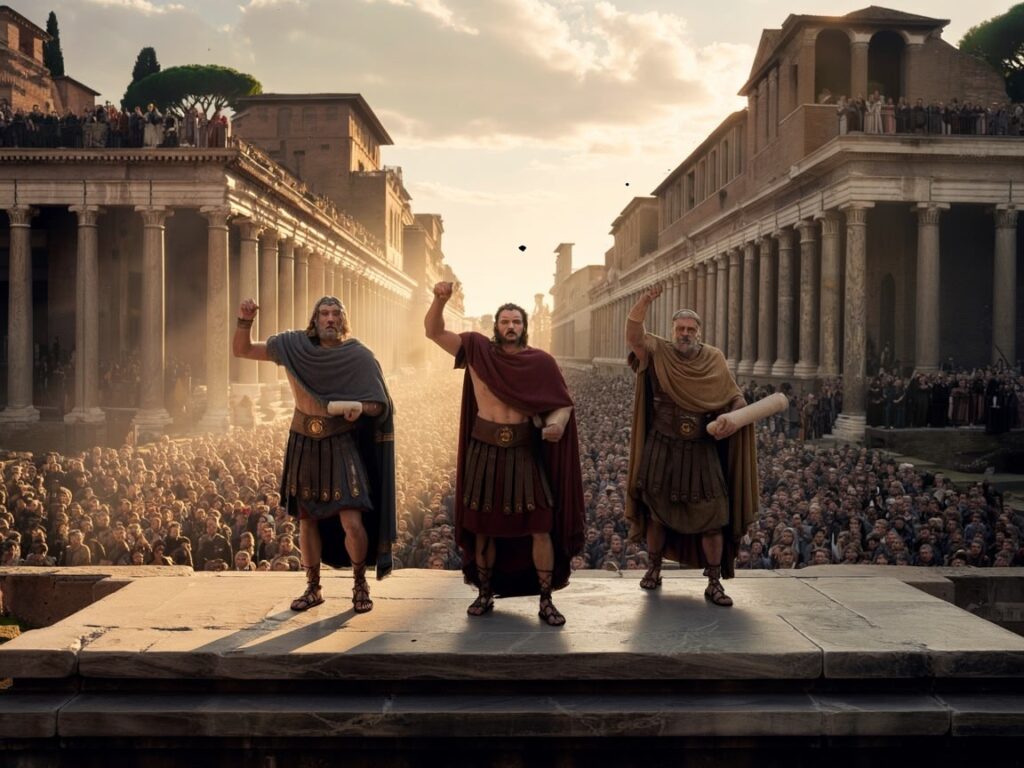
The Transformative Role of Tribunes in Rome
Bringing the People into Politics
Before the tribunate, common citizens had little structured influence over laws. With the tribunes, the plebs gained not only defenders but also legislators. Decisions no longer belonged solely to patricians and the Senate; instead, the common assemblies could directly determine legal outcomes. Rome’s political system developed from an aristocratic republic into a complex mixed constitution.
Conflict and Tension
However, the tribunate was inherently destabilizing. Patricians saw tribunes as dangerous agitators undermining senatorial authority, while plebeians often viewed them as their last line of defense. Some tribunes pursued moderation, negotiating compromises between Senate and people; others adopted radical stances, clashing violently with elite interests. This dual nature—protector and agitator—made the tribunate a constant source of political turbulence.
The Revolutionary Dimension
Unlike magistracies designed to maintain order, the tribunate institutionalized permanent potential for revolution. By championing the poor, blocking magistrates, and proposing redistributive measures, tribunes injected social justice conflicts directly into Rome’s legal framework. For centuries, this created a precarious balance between aristocracy and democracy, ensuring the Republic never became a pure oligarchy.
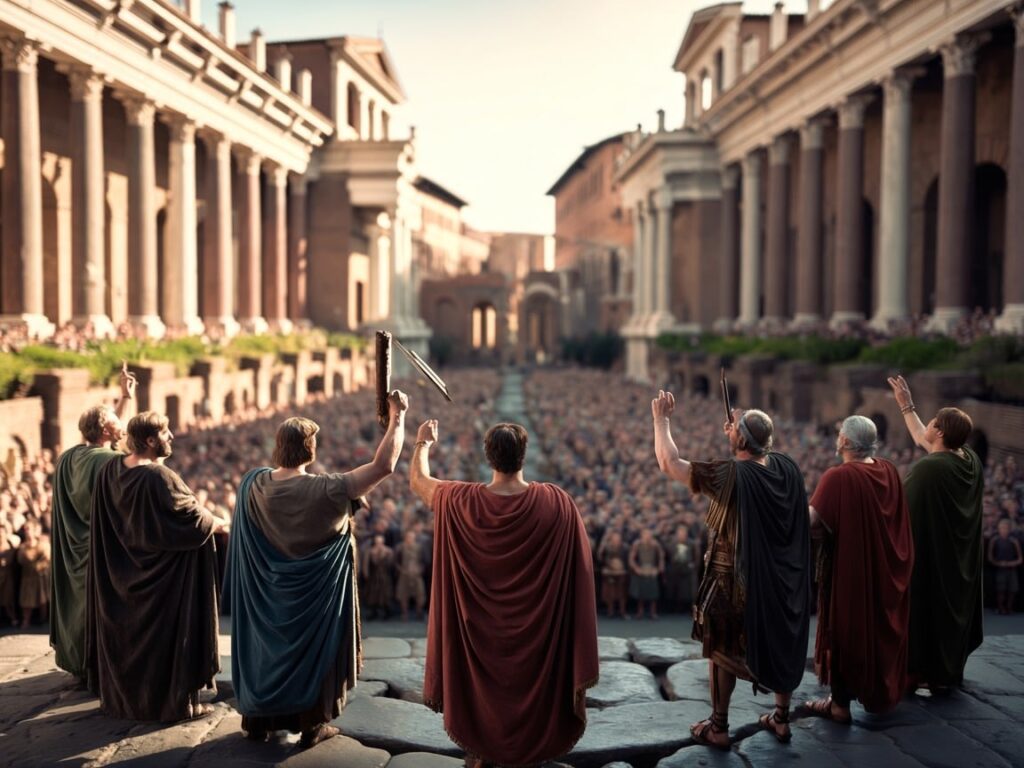
Emblematic Figures of the Tribunate
The Gracchi Brothers: Tiberius and Gaius
Tiberius Gracchus
In 133 BCE, tribune Tiberius Sempronius Gracchus proposed a sweeping land reform law, addressing the concentration of public land (ager publicus) in the hands of wealthy elites. His plan aimed to redistribute land to poor citizens and restore small farmers, ensuring Rome’s military base was preserved. When the Senate resisted, Tiberius resorted to the people’s assembly, bypassing aristocratic control.
His actions—bold use of veto, seizure of legislative initiative, and appeal directly to the people—were revolutionary. Yet they provoked violent resistance. Accused of aspiring to kingship, Tiberius was murdered in a senatorial mob. His death inaugurated an era of political violence in Rome.
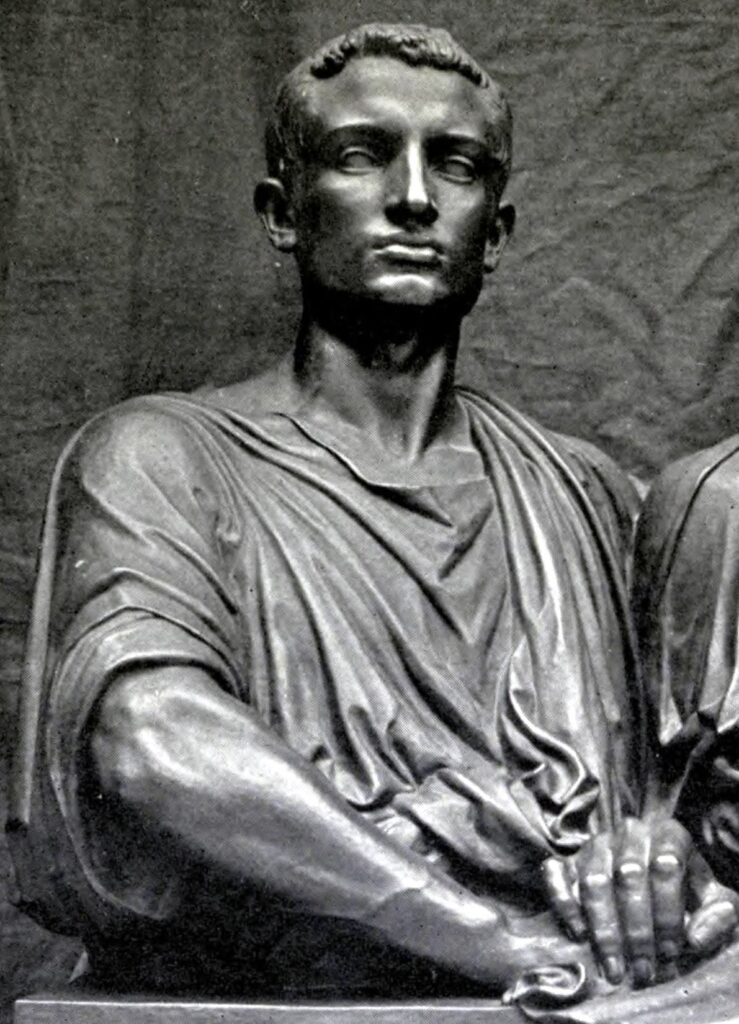
Gaius Gracchus
Ten years later, Tiberius’ brother Gaius Gracchus became tribune and advanced an even more ambitious reform program. He established grain subsidies, promoted colonies for citizens, restructured juries to weaken senatorial dominance, and sought citizenship rights for Italian allies. Gaius used the tribunate as a platform for sweeping social change, uniting various discontented groups under his banner.
However, his radical agenda again provoked elite hostility, leading to violent clashes and his eventual death in 121 BCE. The Gracchi embodied the immense power of the tribunate but also revealed its inherent dangers—once tribunes challenged aristocratic hegemony, the Republic veered into cycles of reform and repression.
Saturninus: The Radical Tribune
Lucius Appuleius Saturninus, tribune in the late 2nd century BCE, followed the Gracchan model with even more controversy. Aligning with Gaius Marius, he passed radical legislation including land distributions to veterans and grain laws. He was notorious for manipulating mobs and using violence to enforce his policies.
While Saturninus succeeded in passing laws through intimidation, his reliance on force alienated moderates. Eventually, his enemies turned on him, and he was killed after a Senate decree declared him a public enemy. Saturninus exemplified the tribunate at its most volatile—transforming a civil office into a revolutionary weapon.
Publius Sulpicius Rufus: Tribunate in Crisis
In 88 BCE, amid the backdrop of the Social War and political rivalry between Marius and Sulla, tribune Publius Sulpicius Rufus used his office to push radical reforms. He proposed distributing newly enfranchised Italian allies across all tribes, thus diluting the power of traditional Roman aristocracy. He also sought to transfer command against Mithridates from Sulla to Marius.
Sulpicius employed violent street gangs to impose his measures, but his manipulation sparked chaos. When Sulla unexpectedly marched on Rome with his army—the first time such an act occurred—Sulpicius’ reforms were undone, and he was eventually killed. His career illustrates how the tribunate’s revolutionary potential collided fatally with the militarization of Roman politics.
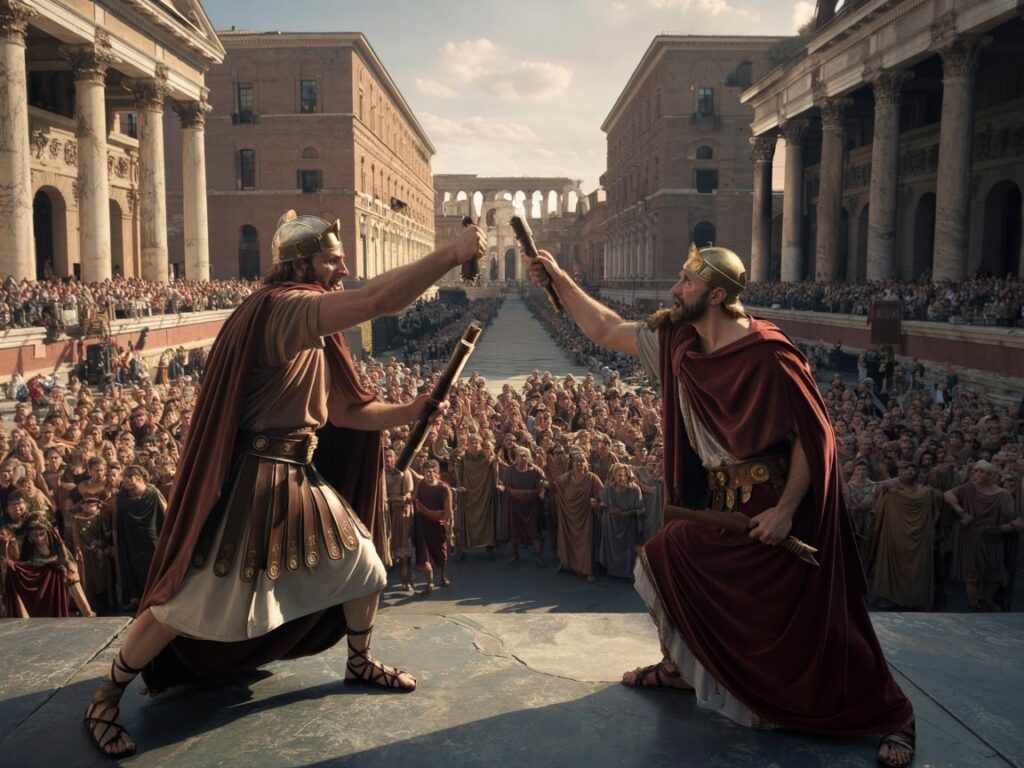
The Tribunate in the Late Republic
Decline or Transformation?
By the late Republic, the tribunate shifted from being a check on elite dominance to a battleground for aristocratic and popular factions. Conservative leaders restricted its powers, while populists revived its radical potential. Both Julius Caesar and Clodius Pulcher relied heavily on tribunes as instruments of political revolution, using their legal immunity and popular legitimacy to dismantle senatorial constraints.
The End of Revolutionary Tribunes
Under Augustus, the principate neutralized the tribunate’s radical edge. The emperor himself assumed tribunician power (tribunicia potestas), symbolically embracing the role of “people’s protector” while stripping it of its revolutionary independence. What began as a plebeian weapon against aristocracy was ultimately absorbed into imperial authority.
Legacy of the Tribunate
A Constitutional Uniqueness
The tribunate remains one of the most revolutionary political inventions of antiquity. No other ancient state institutionalized such a powerful office dedicated to protecting common people. The tribunes combined legal veto, personal inviolability, and legislative initiative, creating an office that both stabilized and destabilized Rome for centuries.
Inspiration and Cautionary Tale
For modern historians, the tribunes stand as both a symbol of democratic innovation and a warning about populism. They demonstrated how institutionalized counterpower could check aristocratic dominance but also how popular politics could spiral into violence and civil war. The careers of the Gracchi, Saturninus, and Sulpicius remind us that defending the people can be both noble and dangerous.
Conclusion
The Tribunes of the Plebs were more than magistrates—they were institutionalized revolutionaries within Rome’s republican framework. By wielding veto, sacrosanctity, and legislative authority, they shattered the monopoly of aristocratic rule and expanded the political sphere to include the plebeian masses. Their legacy reveals both Rome’s capacity for innovation and the perils of social conflict.
They were the defenders of the humble, yet in defending the people, they unleashed forces that the Republic could not contain. Ultimately, the tribunate was absorbed into imperial power, but its revolutionary roots echoed throughout history as an example of how common voices could reshape the fate of a state.

